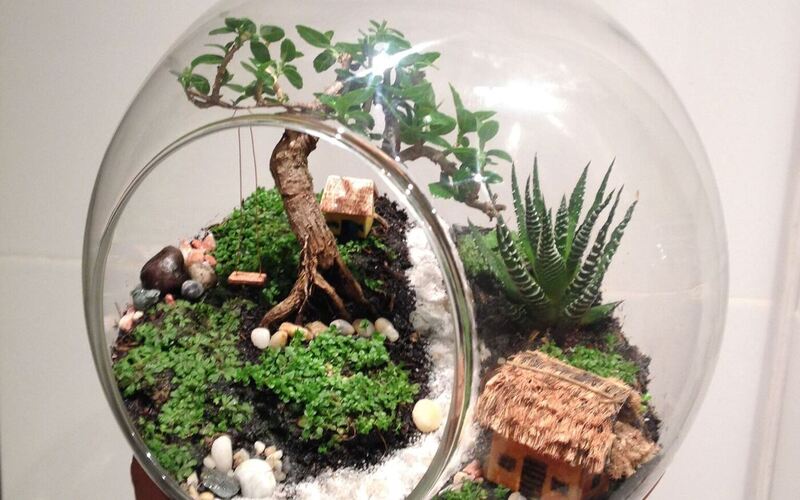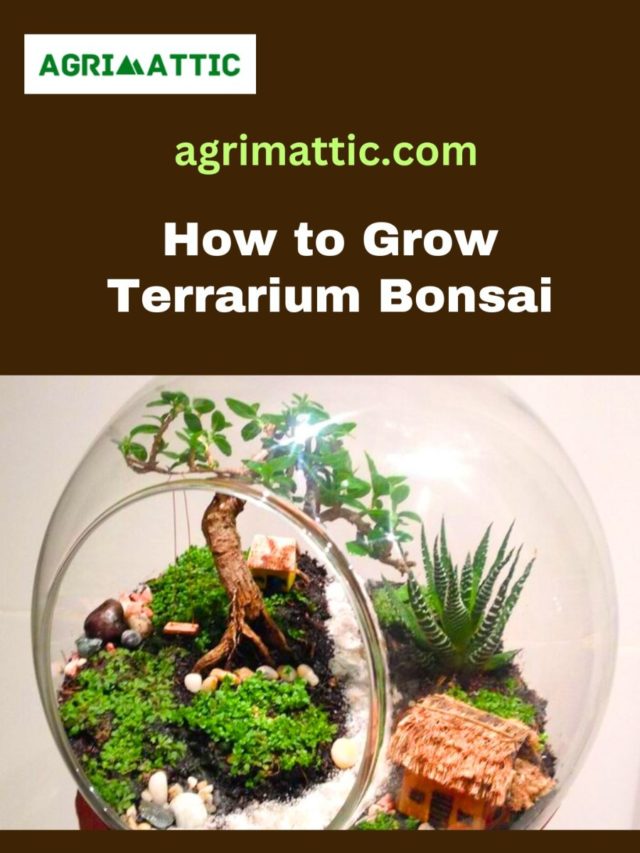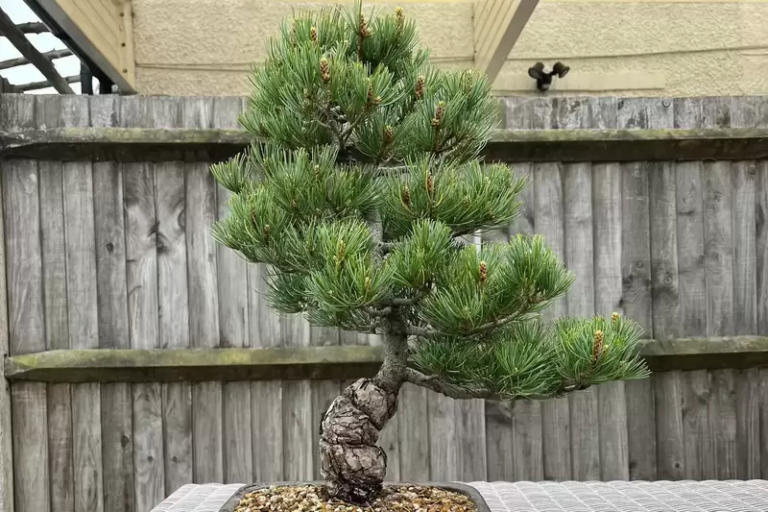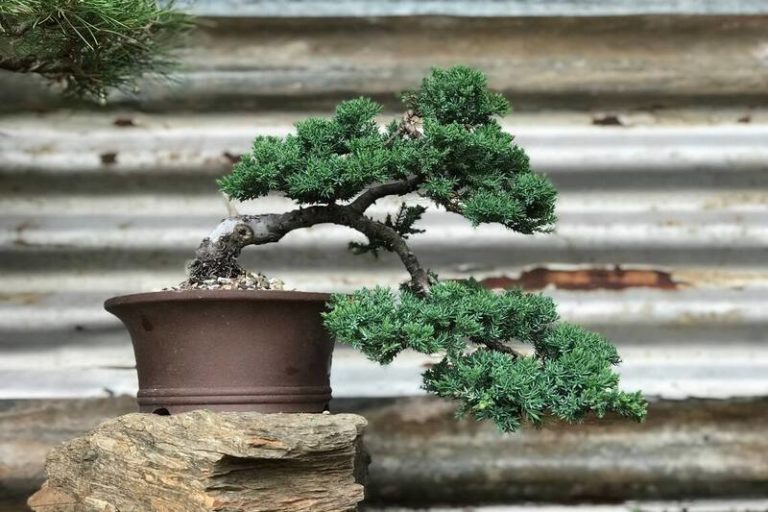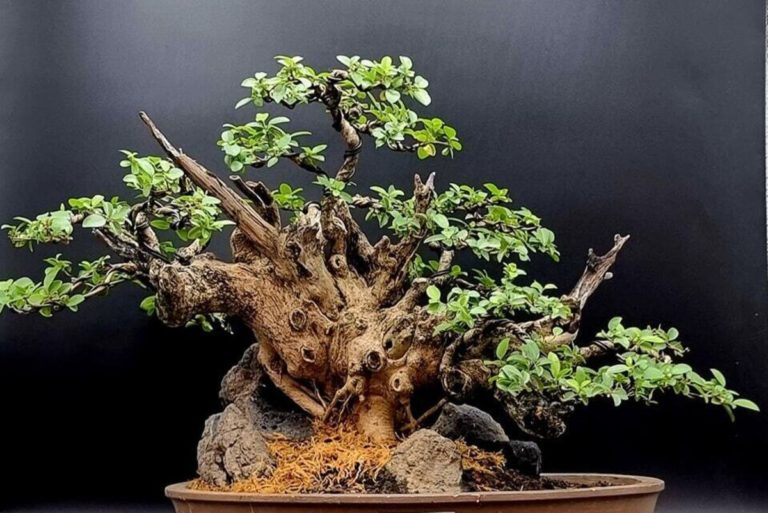Terrarium Bonsai: A Miniature Indoor Garden of Serenity
Terrarium bonsai is an exciting style of indoor gardening that has grown in popularity because to its unique beauty and low-maintenance requirements. You may bring a little world of nature into your house by making a terrarium bonsai, replete with lavish plants, rocks, and ornamental accents. In this essay, we will go through the fundamentals of making and caring for a terrarium bonsai in simple language that is suitable for beginners.
What is Terrarium Bonsai?
Terrarium The technique of cultivating tiny trees in containers and the idea of a terrarium are combined in the bonsai style to produce a self-contained, small environment. By using mosses, ferns, and other understory plants, it entails building a bonsai tree inside a terrarium. To produce a harmonious composition in the constrained terrarium, one must pay close attention to the demands of the plants and master the art of bonsai.
Types of Terrarium Bonsai
There are several types of Terrarium Bonsai that can be created, depending on the specific design, plants used, and style desired. Some common types of Terrarium Bonsai include:
- Forest Terrarium Bonsai: This type of Terrarium Bonsai aims to recreate a miniature forest landscape within the enclosed terrarium. It typically includes multiple bonsai trees of different species and sizes, along with other understory plants like mosses, ferns, and ground covers. The arrangement is carefully designed to create a natural, forest-like scene.
- Moss Terrarium Bonsai: In this type of Terrarium Bonsai, mosses take center stage. Different types of mosses are carefully arranged and trained to create a lush, verdant carpet-like landscape within the terrarium. Moss Terrarium Bonsai can be visually striking and can create a serene, tranquil atmosphere.
- Fern Terrarium Bonsai: Ferns are known for their thick, fluffy leaves, which can be used to make a tropical or jungle-like Terrarium Bonsai. Different kinds of ferns and other partner plants can be put together in the aquarium to make a thick, green canopy.
- Miniature Tree Terrarium Bonsai: This type of Terrarium Bonsai focuses on creating a single miniature tree as the centerpiece of the terrarium. The tree is carefully trained and pruned to create a miniaturized representation of a full-sized tree, and other complementary plants are added to create a balanced composition.
- Succulent Terrarium Bonsai: Succulents, with their unique shapes and water-storing abilities, can be used to create a Terrarium Bonsai with a modern, minimalist look. Different types of succulents can be arranged to create a sculptural, desert-like landscape within the terrarium.
These are just some of the different kinds of Terrarium Bonsai that you can make. The design is adjustable based on individual preferences, aesthetics, and the flora available. Creating a successful Terrarium Bonsai requires careful consideration of plant species, growth behaviors, and compatibility within the enclosed environment of the terrarium.
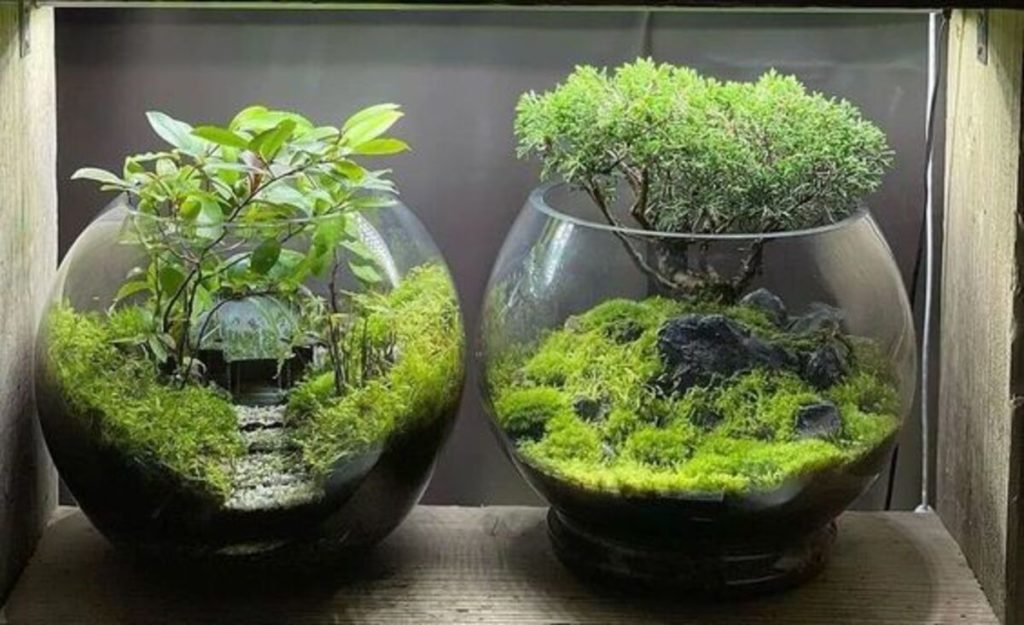
Terrarium Bonsai and Its Symbolism
Terrarium Bonsai, like traditional bonsai, can also carry symbolic meanings and represent various concepts in different cultures. Here are some common symbolic interpretations associated with Terrarium Bonsai:
- Miniaturization: The small size of a Terrarium Bonsai, with its carefully pruned and trained miniature trees, can symbolize the beauty and preciousness of life in its small-scale form. It can represent the value of simplicity, humility, and the appreciation of the small joys in life.
- Harmony: The carefully planned and measured arrangement of plants in a terrarium bonsai can be a symbol of unity and balance in nature. It can show how all living things are linked and rely on each other, and how we need harmony and balance in our lives and relationships.
- Nature and Tranquility: Terrarium Bonsai, with its natural features like trees, mosses, and ferns, may represent a connection with nature and a yearning for peace in our hectic life. It might indicate a wish for tranquility, quiet, and a feeling of grounding in the midst of modern life’s rush and bustle.
- Resilience: Terrarium Bonsai, with its natural features like as trees, mosses, and ferns, may represent a connection with nature and a yearning for peace in our hectic life. It might indicate a need for tranquility, quiet, and a feeling of grounding in the midst of modern life’s rush and bustle.
- Creativity and Artistry: Terrarium Bonsai is a form of living art, where creativity and artistic expression are combined with horticulture. It can symbolize the human spirit of creativity, imagination, and the appreciation of artistic beauty in our lives.
It is crucial to note that symbolism can be interpreted differently based on cultural, individual, and contextual factors. The symbolic meanings of Terrarium Bonsai are open to individual interpretation and may carry different significance for different individuals. The symbolism of Terrarium Bonsai can add substance and significance to the art form, transforming it from a horticultural creation to a representation of more profound ideas and values.
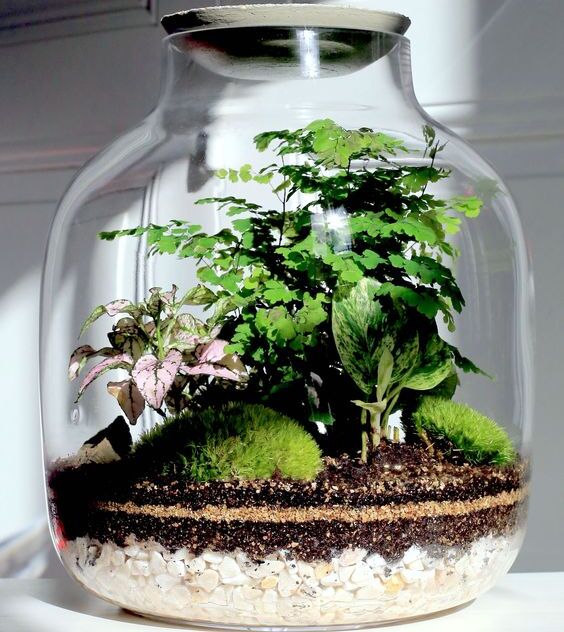
Characteristics of Terrarium Bonsai
Terrarium Bonsai is distinguished from traditional bonsai and other varieties of terrariums by its unique characteristics. Here are some distinguishing features of Terrarium Bonsai:
- Enclosed Environment: One thing that makes Terrarium Bonsai unique is that it is done in an enclosed space, usually a glass case, which forms a small ecosystem inside. The sealed space makes it easy to control the humidity, temperature, and amount of light, giving the plants their own self-contained microclimate.
- Miniature Trees: Terrarium Bonsai typically feature miniature trees as the focal point of the composition. These trees are carefully trained and pruned to create a miniaturized representation of a full-sized tree, with the same aesthetic principles of traditional bonsai. Common tree species used in Terrarium Bonsai include junipers, pines, maples, and ficus, among others.
- Understory Plants: Along with small trees, understory plants like mosses, ferns, ground covers, and other partner plants are often added to Terrarium Bonsai. These plants improve the composition’s general look and give it a natural, layered look, like a forest floor or a tiny landscape.
- Limited Space: Terrarium Bonsai necessitates careful planning due to the restricted area available within the confined setting. The size of the container limits plant growth and size, and rigorous pruning, wiring, and training procedures are needed to keep the trees the ideal size and form inside the constrained area.
- Self-Sustaining Ecosystem: Terrarium Bonsai is intended to be a self-sustaining ecosystem, with the plants interacting and supporting one another inside the contained setting. The trees and understory plants work together to generate a balanced microclimate in which the plants’ moisture, light, and nutritional requirements are satisfied naturally.
- Aesthetic Design: Terrarium Bonsai is a hybrid of horticulture and creative design. The entire composition, balance, and aesthetics of the layout are carefully considered, including the placement of trees, understory plants, rocks, and other components. To produce aesthetically appealing and harmonious compositions, design concepts such as proportion, balance, and focus points are applied.
- Low-Maintenance: Terrarium Bonsai is distinguished by its low maintenance requirements as compared to conventional bonsai. The enclosed enclosure contributes to a more stable and regulated environment, minimizing the need for regular watering and other maintenance duties. However, constant monitoring and care are still essential to guarantee the plants’ health and well-being.
These are some of the key characteristics of Terrarium Bonsai. It’s a unique fusion of bonsai and terrarium, combining the art of miniature trees with the concept of a self-contained ecosystem, creating a captivating and sustainable living art form.
How to Grow Terrarium Bonsai?
Growing Terrarium Bonsai requires careful attention to the specific needs of the plants within the enclosed environment. Here are general steps to grow Terrarium Bonsai:
- Choose the right container: Choose a glass container with a lid or cork stopper that is large enough to suit the required size of the Terrarium Bonsai while yet allowing the plants to develop and breathe. The container should be free of pollutants and clean.
- Select appropriate plants: Select small trees and understory plants that will thrive in a terrarium setting. Junipers, pines, maples, and ficus are frequent tree species used in Terrarium Bonsai, while mosses, ferns, and ground coverings are common understory plants. Investigate and pick plants with similar light, humidity, and temperature requirements.
- Create the terrarium substrate: Terrarium Bonsai require a well-draining substrate that maintains moisture but does not become soggy. Depending on the unique needs of the plants, combine a substrate layer of suitable components such as bonsai soil, sphagnum moss, perlite, and/or orchid bark.
- Plant the trees and understory plants: Plant the trees and understory plants in the terrarium substrate with care, taking into account the desired composition and design. Use proper planting practices, such as moderate root trimming and uniformly spacing the roots in the substrate. To improve the visual appeal of the Terrarium Bonsai, add ornamental materials such as pebbles, stones, and mosses.
- Provide appropriate care: Place the Terrarium Bonsai in an area with adequate lighting. The majority of Terrarium Bonsai prefer indirect, brilliant light, although the specific requirements may vary by plant species. Avoid situating the terrarium in direct sunlight, as it can injure the plants with excessive heat. Misting the plants and/or using a hygrometer to measure humidity can be used to monitor and maintain appropriate humidity levels in the terrarium. Carefully hydrate the plants, ensuring that the soil remains mildly damp but not soggy. Overwatering can result in root decay, so avoid doing so. Regularly prune and form the trees and understory vegetation to maintain the intended size and form.
- Monitor for pests and diseases: Regularly inspect the Terrarium Bonsai for any signs of pests or diseases, and take appropriate action if any issues arise. Isolate any infected plants to prevent the spread of pests or diseases within the terrarium.
- Maintain the enclosed environment: Maintain the enclosed environment and create a self-sustaining ecosystem by retaining the terrarium’s lid or cork closure in position. However, excessive condensation may necessitate removing the lid for a short time to allow excess moisture to dissipate and prevent mildew growth.
- Learn and adapt: Each Terrarium Bonsai is unique, and it’s important to learn and adapt to the specific requirements of the plants within your terrarium. Monitor the health and growth of the plants regularly, and make adjustments to the care routine as needed to ensure their well-being.
Growing Terrarium Bonsai takes time, careful attention to detail, and patience. It’s important to learn about the unique needs of the plants you choose and make sure the sealed terrarium has the right conditions for their growth. With the right care, your Terrarium Bonsai can grow into a beautiful living work of art that will last for a long time.
Benefit of Terrarium Bonsai
There are several benefits to growing Terrarium Bonsai, including:
- Low maintenance: Terrarium Bonsai generally require less maintenance compared to traditional outdoor bonsai. The enclosed environment of a terrarium helps to create a self-sustaining ecosystem that can regulate humidity and reduce the need for frequent watering. This makes Terrarium Bonsai a suitable option for busy individuals or those with limited time for plant care.
- Indoor gardening: Bonsai trees can be grown indoors in terrariums. This lets bonsai fans enjoy the beauty of bonsai trees in small areas like apartments, businesses, or other indoor places where gardening outside may not be possible.
- Year-round growth: Terrarium Bonsai can be grown and enjoyed year-round, no matter what the weather is like. This lets the bonsai plants grow and be enjoyed all year long, without having to worry about yearly changes or extreme weather conditions that could hurt outdoor bonsai.
- Unique and artistic display: Terrarium Bonsai can be grown and enjoyed year-round, no matter what the weather is like. This lets the bonsai plants grow and be enjoyed all year long, without having to worry about yearly changes or extreme weather conditions that could hurt outdoor bonsai.
- Controlled environment: The contained space of an aquarium makes it easier to control things like light, humidity, and temperature, which can be changed to meet the needs of the bonsai trees. This can lead to healthier and stronger growth, as well as the ability to give each type of bonsai its own unique climate.
- Plant protection: Terrariums provide a protective barrier against pests and diseases that can commonly affect outdoor bonsai trees. The enclosed environment helps to reduce the risk of infestation and diseases, resulting in healthier and more resilient bonsai trees.
- Educational and experimental: Terrarium bonsai can be a great way to learn about the basics of bonsai and try out different styles, methods, and types of plants in a controlled environment. It gives bonsai fans a chance to improve their skills and learn more about growing bonsai.
Terrarium Bonsai offers the benefits of low maintenance, indoor gardening, year-round growth, unique display, controlled environment, plant protection, and educational/experimental opportunities. It’s a creative and captivating way to enjoy the art of bonsai in an indoor setting.
Styling and Design of Terrarium Bonsai
The styling and design of Terrarium Bonsai can vary depending on personal preference and the type of bonsai tree being grown. However, here are some general guidelines for styling and designing Terrarium Bonsai:
- Size and scale: Since Terrarium Bonsai are usually grown in small, closed pots, it’s important to choose bonsai trees that are the right size for the container. Look for bonsai trees with smaller leaves, branches, and roots that will fit well in the small area of a terrarium.
- Bonsai style: Terrarium bonsai can use different types of bonsai, like formal upright (chokkan), informal upright (moyogi), slanting (shakan), waterfall (kengai), and others. Choose a bonsai style that works well with the size and shape of the terrarium’s container and place the plants in a way that looks good.
- Plant placement: Think carefully about where to place the bonsai tree in the aquarium. Place the tree so that it is centered and balanced, with its branches and leaves placed in a nice way. Avoid crowding and make sure the tree has enough room to grow.
- Background and foreground elements: Consider adding background and foreground elements to enhance the overall design of the Terrarium Bonsai. Background elements can include rocks, moss, or other decorative items that add depth and dimension to the composition. Foreground elements can include smaller plants or ground cover that complement the bonsai tree and create a naturalistic look.
- Pruning and shaping: For the Terrarium Bonsai to keep its style and shape, it needs to be pruned and shaped regularly. Use the right methods for bonsai trimming to cut back the tree’s branches, leaves, and roots to keep its size and shape. Pay attention to how and where the tree grows and prune it properly to get the look you want.
- Maintenance and care: Proper care and maintenance are crucial for the health and longevity of the Terrarium Bonsai. This includes regular watering, monitoring of humidity levels, appropriate lighting, and fertilization. Be mindful of the enclosed environment of the terrarium and adjust care practices accordingly to create a suitable microclimate for the bonsai tree.
- Creativity and experimentation: Terrarium Bonsai offers an opportunity for creativity and experimentation. Don’t be afraid to try different styling techniques, plant combinations, and design elements to create a unique and personalized Terrarium Bonsai that reflects your artistic vision.
The styling and design of Terrarium Bonsai involve careful consideration of size and scale, bonsai style, plant placement, background and foreground elements, pruning and shaping, maintenance and care, and creative experimentation. It’s important to create a visually appealing and healthy composition within the limited space of the terrarium while maintaining the principles of bonsai aesthetics.
How to Care and Maintain Terrarium Bonsai?
Caring for and maintaining Terrarium Bonsai involves several key aspects, including watering, humidity, lighting, fertilization, pruning, and pest control. Here are some general guidelines for caring and maintaining Terrarium Bonsai:
- Watering: Terrarium Bonsai typically require less frequent watering compared to outdoor bonsai due to the enclosed environment that helps to retain moisture. It’s important to avoid overwatering, as excessive moisture can lead to root rot. Water the bonsai tree when the top inch of the soil feels slightly dry. Use a spray bottle or a watering can with a narrow spout to water the tree gently, avoiding direct contact with the leaves.
- Humidity: Terrarium Bonsai thrive in a humid environment, as the enclosed glass container helps to create a microclimate with increased humidity. However, it’s still important to monitor the humidity levels inside the terrarium and make adjustments as needed. You can use a hygrometer to measure humidity levels and mist the tree and the inside of the terrarium with water to increase humidity when needed. Avoid condensation buildup on the glass, as it can lead to fungal growth or disease.
- Lighting: Terrarium Bonsai require adequate light to thrive. Place the terrarium in a location that receives bright, indirect light. Avoid placing it in direct sunlight, as it can cause heat buildup and damage the bonsai tree. If needed, you can use artificial grow lights, such as fluorescent or LED lights, to supplement the natural light.
- Fertilization: Terrarium Bonsai require fertilizing on a regular basis to ensure good development. Follow the manufacturer’s recommendations when applying a balanced liquid bonsai fertilizer or a slow-release bonsai fertilizer. Overfertilization should be avoided since it might cause salt accumulation in the soil. Fertilize the bonsai tree throughout the growing season, which normally lasts from spring to autumn, then reduce or discontinue fertilizer during the winter months when the tree is dormant.
- Pruning: Regular pruning is essential for maintaining the shape and size of Terrarium Bonsai. Use appropriate bonsai pruning techniques to trim the branches, leaves, and roots of the tree. Prune back new growth to maintain the desired shape and promote ramification (branching). Remove any dead, yellowing, or diseased leaves or branches promptly to maintain the health of the bonsai tree.
- Pest control: Monitor the Terrarium Bonsai regularly for pests, such as aphids, mites, or scale insects, which can infest indoor plants. If pests are detected, use appropriate pest control methods, such as insecticidal soap, neem oil, or other natural or chemical insecticides, according to the manufacturer’s instructions. Isolate the affected tree to prevent further infestation.
- Air circulation: Proper air circulation is important for preventing stagnant air and promoting healthy growth in Terrarium Bonsai. Open the terrarium occasionally to allow fresh air exchange, but avoid excessive drafts or sudden changes in temperature.
- Soil maintenance: Terrarium Bonsai typically require well-draining, bonsai-specific soil mixtures that are suitable for their species. Check the soil moisture regularly and repot the bonsai tree as needed to refresh the soil and promote healthy root growth.
Caring for and maintaining Terrarium Bonsai involves proper watering, humidity management, adequate lighting, fertilization, pruning, pest control, air circulation, and soil maintenance. Regular monitoring, adjustments, and proper care practices will help ensure the health and vitality of your Terrarium Bonsai.
Terrarium Bonsai Care Sheet
| Aspect | Care Tips |
|---|---|
| Watering | – Water when the top inch of soil feels slightly dry |
| – Avoid overwatering to prevent root rot | |
| Humidity | – Maintain a humid environment inside the terrarium |
| – Use a hygrometer to monitor humidity levels | |
| – Mist the tree and terrarium interior to increase humidity when needed | |
| Lighting | – Place in a location with bright, indirect light |
| – Avoid direct sunlight to prevent heat buildup and leaf burn | |
| – Supplement with artificial grow lights if needed | |
| Fertilization | – Use a balanced liquid bonsai fertilizer or slow-release bonsai fertilizer |
| – Follow manufacturer’s instructions for application | |
| – Fertilize during the growing season, reduce or stop during winter | |
| Pruning | – Regularly prune to maintain shape and size |
| – Use appropriate bonsai pruning techniques | |
| – Remove dead, yellowing, or diseased leaves/branches promptly | |
| Pest Control | – Monitor regularly for pests |
| – Use appropriate pest control methods, such as insecticidal soap, neem oil, or others | |
| – Isolate affected tree to prevent further infestation | |
| Air Circulation | – Allow for occasional fresh air exchange |
| – Avoid excessive drafts or sudden temperature changes | |
| Soil Maintenance | – Use well-draining, bonsai-specific soil mixtures |
| – Check soil moisture regularly | |
| – Repot as needed to refresh soil and promote healthy root growth |
Note: The care needs of your bonsai tree will vary based on the species and the unique conditions of your terrarium setting. It is critical to investigate and understand the individual demands of your Terrarium Bonsai species before making alterations. Regular monitoring, observation, and care techniques are critical to the health and well-being of your Terrarium Bonsai.
FAQ:
Q: What is Terrarium Bonsai?
A: Terrarium A bonsai is a small tree or plant planted in a terrarium, which is a closed or partially enclosed glass container. It blends the concepts of bonsai (the art of growing trees or plants in small pots) with the notion of terrariums (self-contained ecosystems that imitate the natural environment within a glass cage).
Q: What types of plants are suitable for Terrarium Bonsai?
A: Small-sized plants with humidity tolerance, low light requirements, and compact growth habits, such as ferns, mosses, palms, succulents, and small-leaved tropical trees, are suitable for Terrarium Bonsai.
Q: How often should I water my Terrarium Bonsai?
A: Water when the top inch of soil feels slightly dry, avoiding overwatering to prevent root rot. Monitor soil moisture and adjust watering accordingly.
Q: How do I maintain humidity levels in my Terrarium Bonsai?
A: Terrariums are naturally humid, but you can increase humidity by misting, using a tray of water, or a humidifier.
Q: What lighting conditions are suitable for Terrarium Bonsai?
A: Bright, indirect light is ideal. Avoid direct sunlight.
Q: How do I fertilize my Terrarium Bonsai?
A: Use balanced liquid or slow-release bonsai fertilizer during the growing season, following manufacturer’s instructions.
Q: How do I prune my Terrarium Bonsai?
A: Regularly prune using appropriate bonsai techniques to maintain shape and size, removing dead or diseased leaves/branches.
Q: How do I control pests in my Terrarium Bonsai?
A: Monitor regularly and use appropriate pest control methods, such as insecticidal soap or neem oil, as needed.
Q: Can I use any soil for my Terrarium Bonsai?
A: Use well-draining, bonsai-specific soil mixtures with a combination of organic and inorganic materials for optimal growth.
Also Read:

